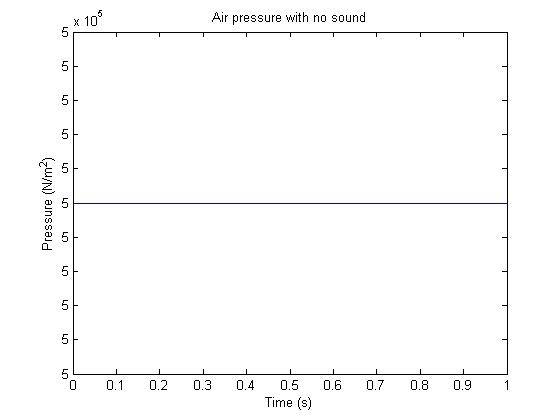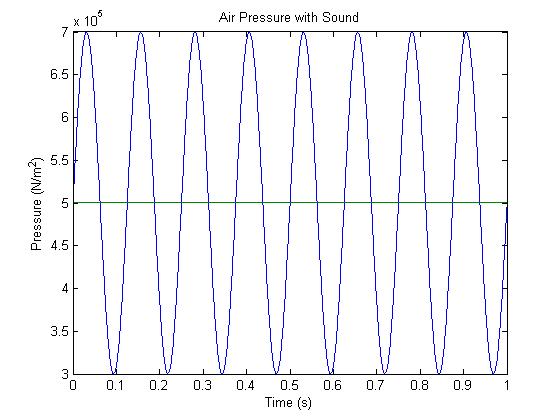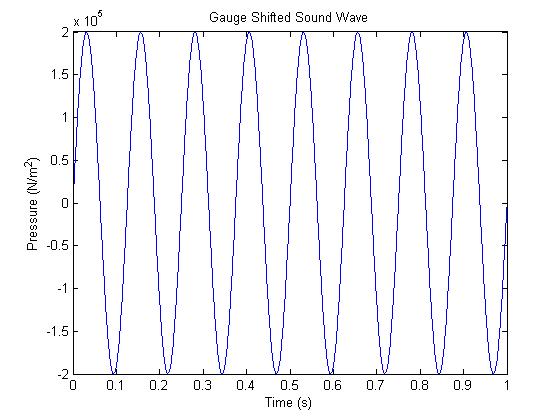(→Matlab) |
|||
| (3 intermediate revisions by 2 users not shown) | |||
| Line 1: | Line 1: | ||
| + | [[Category:ECE 301]] | ||
| + | [[Category:Mboutin]] | ||
| + | |||
== Material Summary== | == Material Summary== | ||
| Line 8: | Line 11: | ||
Examples : Sin waves, Sound, AC/ DC currents | Examples : Sin waves, Sound, AC/ DC currents | ||
| − | Take sound as an | + | Take sound as an example, with absence of sound, the air pressure, x(t) is a constant value, approximately <math>10^5 N/m^2 </math>. |
| − | + | [[Image:Lec2Plot1_ECE301Fall2008mboutin.jpg|frame|center|A plot of air pressure with respect to time with no sound energy]] | |
| − | + | ||
| Line 17: | Line 19: | ||
| − | + | [[Image:Lec2Plot2_ECE301Fall2008mboutin.jpg|frame|center|A plot of air pressure with respect to time with a low-frequency sine wave. This sound would probably not be audible, but is presented with such a low frequency in order to actually see the waveform.]] | |
| Line 23: | Line 25: | ||
| − | + | [[Image:Lec2Plot3_ECE301Fall2008mboutin.jpg|frame|center|A plot of air pressure with respect to time with a low-frequency sine wave. The "resting pressure" of air has been removed, so that the sine wave oscillates about the time axis.]] | |
| Line 33: | Line 35: | ||
A very simple example of matlab code to produce the note "A" : | A very simple example of matlab code to produce the note "A" : | ||
| − | + | <pre> | |
delta = 0.00005; | delta = 0.00005; | ||
| − | |||
t = 0:delta:5 ; | t = 0:delta:5 ; | ||
| − | |||
y = sin(2*pi*440*t); | y = sin(2*pi*440*t); | ||
| − | |||
sound (y, 1/delta); | sound (y, 1/delta); | ||
| + | </pre> | ||
== Linearity == | == Linearity == | ||
Latest revision as of 16:27, 3 December 2008
Material Summary
In this lecture we deal on Continuous signals, Linearity, and of course, some MATLAB.
Continuous Signal
Continuous signal is a signal that varies with time, and can be represented as a function of time, x(t).
Examples : Sin waves, Sound, AC/ DC currents
Take sound as an example, with absence of sound, the air pressure, x(t) is a constant value, approximately $ 10^5 N/m^2 $.
Thus, if there's sound, there would be varioation of air pressure about the atmospheric pressure.
As the pressure varies around x(t) = $ 10^5 $, we gauge shift the graphs such that it is pulled down to 0.
Using any examples, one can notice that while the sound's amplitude increases, the louder the voice is. In the other hand, if the frequency increases, the higher the pitch is.
This is quite noticable if you had a sound editing program. Observe the frequency change when the pitch changes, and the amplitude change when the loudness changes.
Matlab
A very simple example of matlab code to produce the note "A" :
delta = 0.00005; t = 0:delta:5 ; y = sin(2*pi*440*t); sound (y, 1/delta);
Linearity
Feedback
Did the second lecture make sense? Please write your feedback here.




